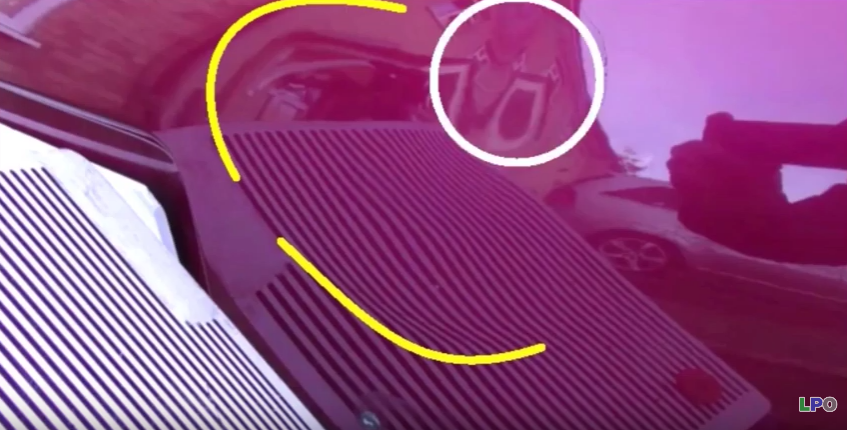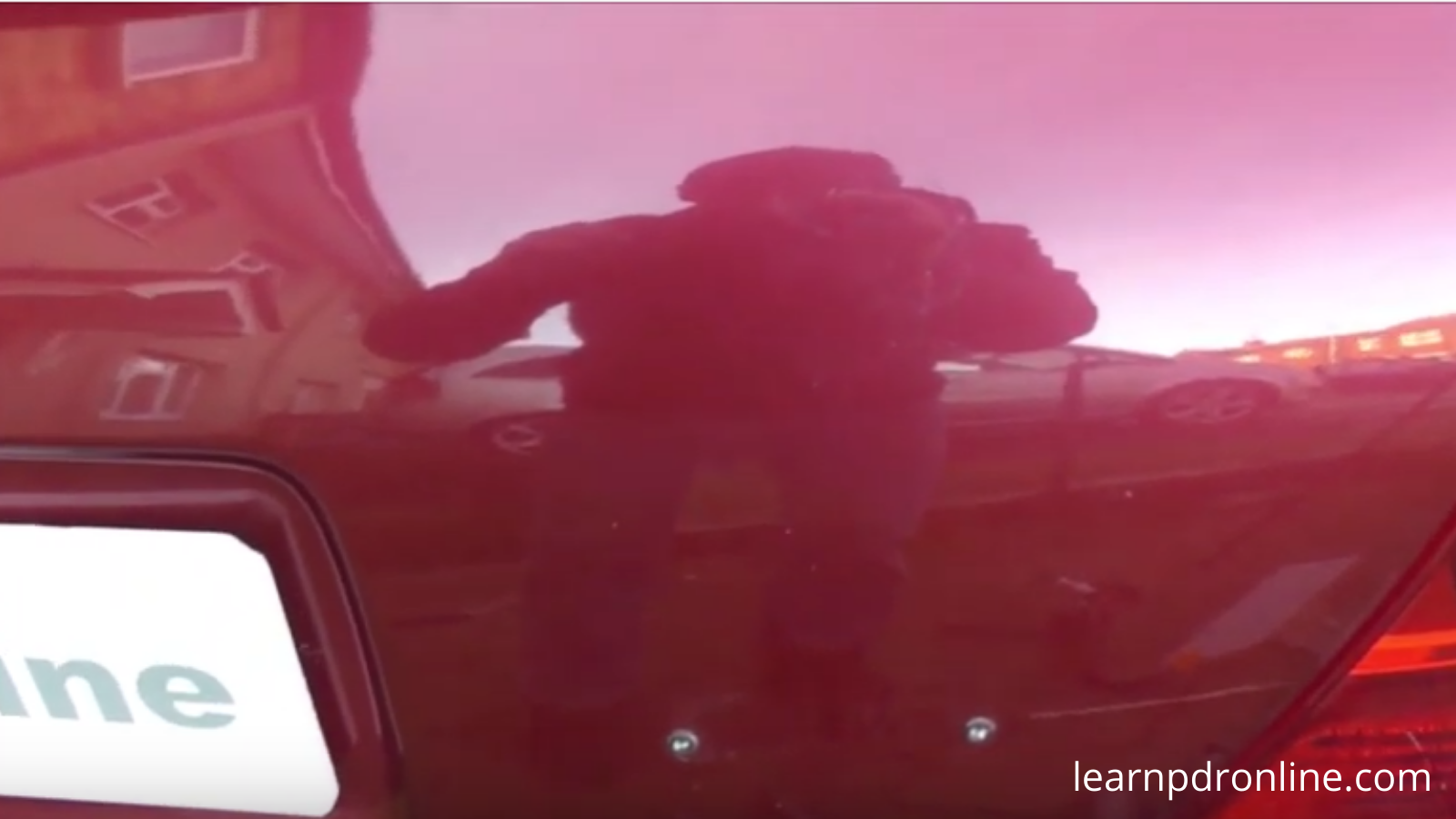Let’s Get Started
We have a nice juicy dent to work on our training car so let's get started so I start the repair by warming up the panel. This helps to protect the paint but also gives good adhesion from my glue whether that's hot or cold to the panel. I'm using my lightweight aluminum slide hammer, my Glexo tab and cold glue set up.

You do need to allow a good 10-15 minutes to set it up before first application. That is to allow the glue to adhere to the tab before use. So when I apply the tab to the panel I give it a slight twisting motion. This also helps the glue adhere to the tab and the panel. A couple of light taps before giving it a few harder taps.

Reduce the Dent Size
See the amount of force I’m able to create with this cold glue. See how I start to reduce the dent size. Remove the glue by using a similar twisting motion. It will leave a bit of oily residue but it's easy to remove with rubbing alcohol or methylated spirits.
You can see I've started to reduce the dent by about 50% now there's still a bit of work to do. We're going to rework that glue and make it malleable and apply it into the center of the dents again. A bit of a twisting motion to help adhesion, a couple of light taps before giving it a good pull.

Check on Some High & Lows
So now you can see after that second pull I've significantly reduced the dent size but there's still a lot of distortion and a lot of work to do. Now with the line board, we can see we've got a crown. This is my primary crown and then to the left is the secondary crown caused by my dent in the white circle.

In the line board set up, there's still a fair bit of distortion in that panel. We've got some highs and lows. There is plenty of work to do and I will continue to use the glue to see how much more I can pull out. There's a good chance we're going to have to release some of that tension before the metal starts to flow.
Releasing Tension from the Panel
Again I apply a little bit of heat then give it a couple of taps. We're going to use a tap down with a soft leather tip from crow carb which is brilliant for removing crowns. I'm using my tap down and tapping down those high spots to release tension into the area.

This is going to allow the metal to flow so when I do my next glue pull it's going to give me a little bit more. It is important to keep checking your work throughout the repair process. Keep an eye on any hidden damage. As you release tension from one section of the panel it's easy to move into another section.
Check & Cross-Check
Keep reassessing your reading device whether that's a line board, fog, or lights. Make sure that the technician can see exactly what it is you're trying to work on. Now that I've released some of that tension I'm able to pull up some of the low spots. Once again I'm going to attach my cold glue with a slight twist and then give it a couple of light taps.

There's still a lot of work to do as I'm going to open up the dent. It's good to speed up this video so you can see the process. This will allow the panel to become softer and help me lift up the lows. I'm going to continue with the glue pulling process and see if I can shift that low spot with the cold glue.
Look for a Hidden Damage
At this stage, I realize there's a bit more to do. I've released a lot of the tension from around the high spots and the crowns. The tension and crowns usually prevent the last of the low spots from coming up. There is something behind the dent that's preventing the last bit to come out. We give it a couple more pulls to see if I can lift any of the low. We're going to take a look on the inside and see what's behind the dent because it feels very tight.

Here I have my brace and it is bonded to the inside of the tailgate panel. We have an internal bracket or reinforcer that's bonded to the outer skin of the tailgate pane. I find hot glue generally a little bit stronger so that would work. We've got good access so I’ll use my double bend bar with our R4 tip.
Final Touch
I'm going to finish this repair off with traditional kind of bar methods. There will be a lot more tapping around and blending. You can see me pushing and that R4 tip is behind where those lines are pinching together. It’s a slow process but I will work along with that low spot of the panel.
Gradually I start to bring it back up again. It's a slow precise process to lift the lows with this method. I'm now using my blending hammer and tidying up some of the high spots. There's a couple of minor little lows that I can't reach from that angle. So I'm going to remove this tailgate adjuster.

I now have access and I'm using a double bend bar with the R4 tip. I'll continue the pushing process and bring up the low spots. I'm just going to finish off this repair with some more tapping down. I've switched to the root beer just to allow more accuracy in tapping down these fine little highs.

Overall I'm really pleased with how the repair process has gone. You can see how effective the cold glue was. The repairs came out really well! So if you want to learn more about PDR tools & techniques check on LearnPDROnline.com! You can also be a part of our community! So whether you just want to learn a new skill or you want to be in the business, we will be happy to help you get started!
